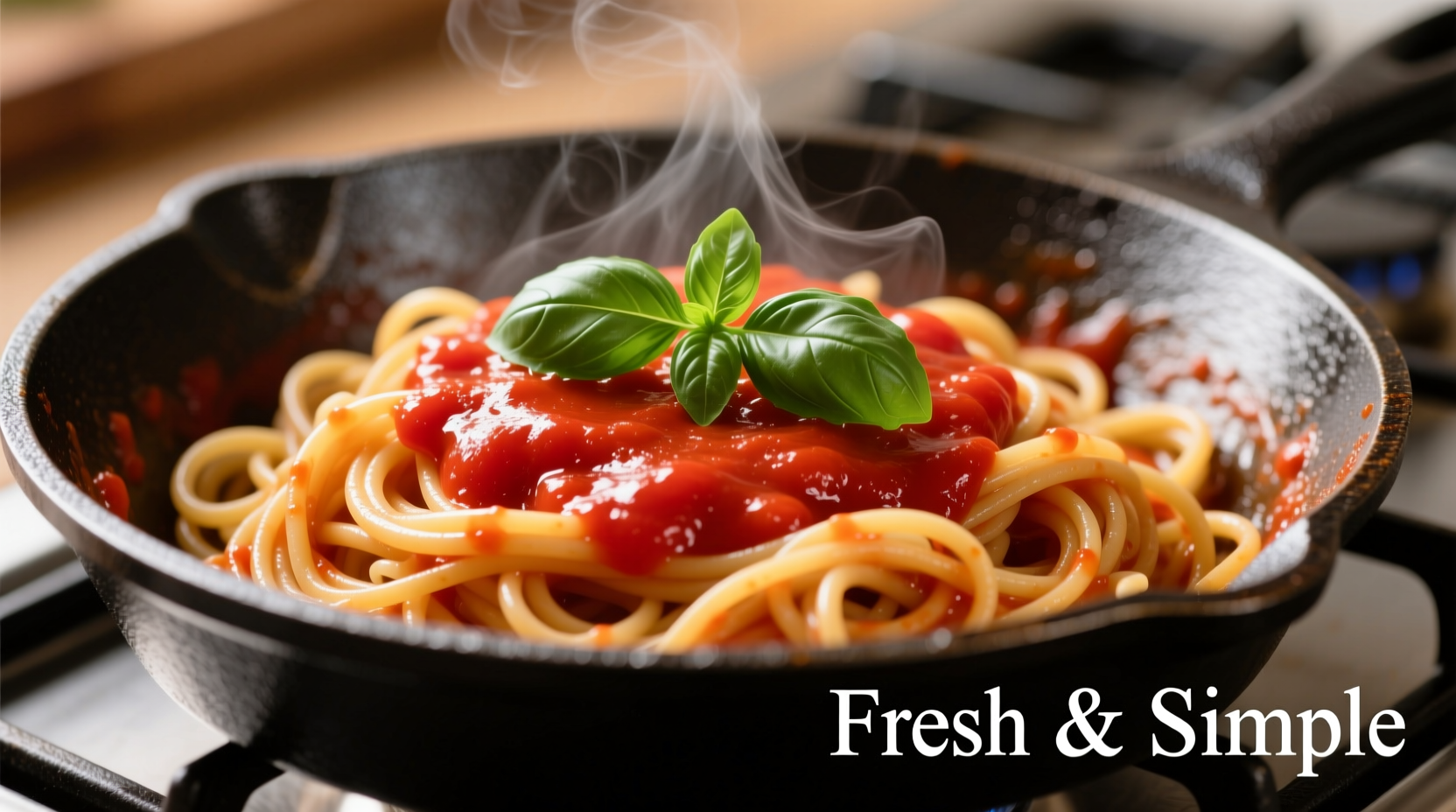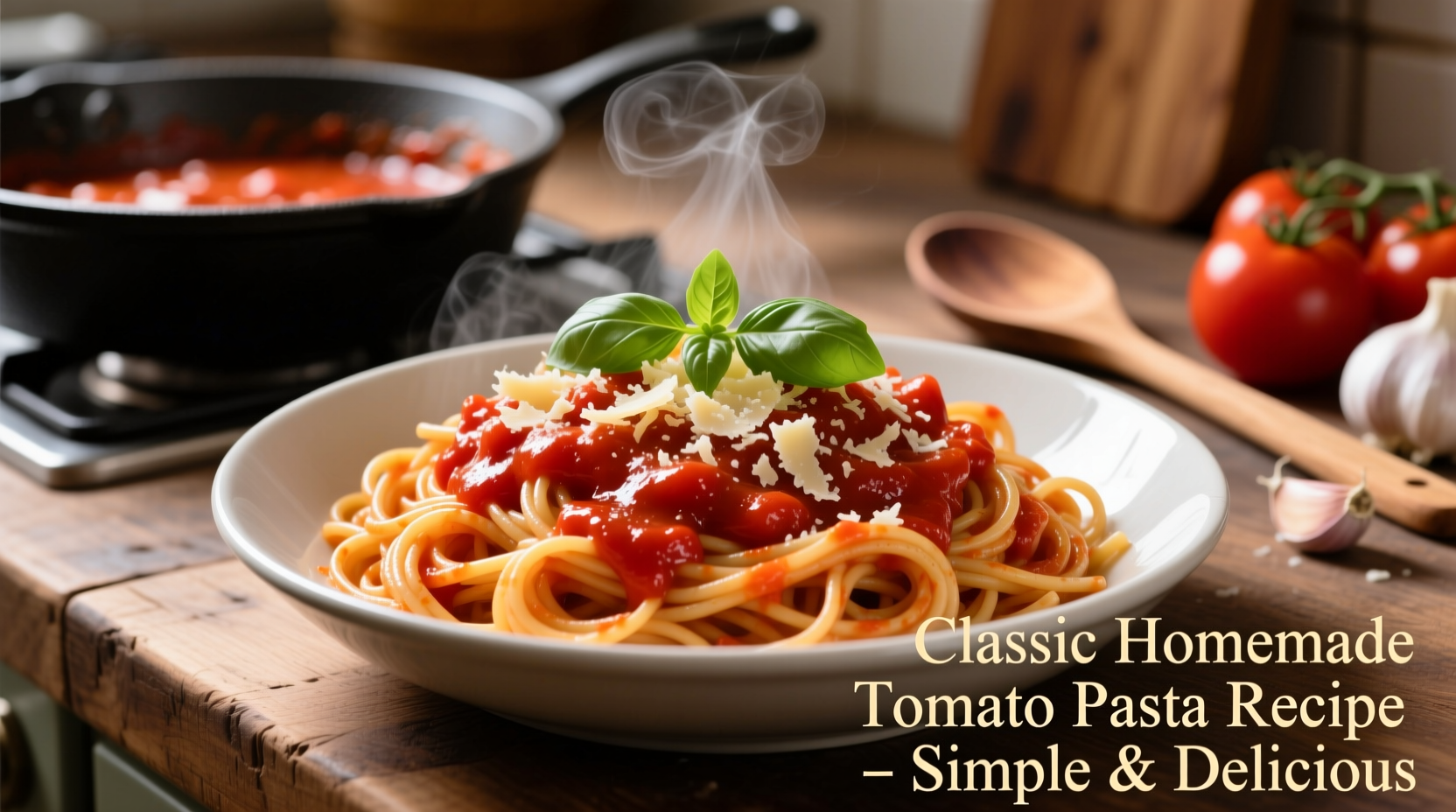Here's the direct answer you need: A perfect pasta with tomato sauce recipe requires just 6 quality ingredients—ripe tomatoes, extra virgin olive oil, garlic, fresh basil, salt, and your choice of pasta—and takes 25 minutes from start to finish. The key is using San Marzano tomatoes for authentic flavor, cooking pasta al dente, and finishing the sauce in the pasta water for perfect emulsion.
The Ultimate Weeknight Pasta with Tomato Sauce: Simple, Authentic & Delicious
When you're craving comfort food that's both healthy and satisfying, nothing beats a classic pasta with tomato sauce. This isn't just another recipe—it's the authentic Italian method perfected over generations, adapted for modern home kitchens. You'll create a vibrant, restaurant-quality dish in just 25 minutes with pantry staples, no fancy equipment required. Whether you're cooking for yourself or feeding a family, this recipe delivers consistent results every time.
Why This Recipe Works When Others Fail
Most "quick" tomato pasta recipes miss the mark because they skip the essential technique of finishing the sauce with pasta water. Professional chefs know that the starchy cooking water creates a silky emulsion that makes the sauce cling perfectly to the pasta. This recipe builds in that critical step while keeping preparation simple enough for weeknight cooking.
What You'll Actually Need (No Specialty Items)
Forget complicated ingredient lists. For truly authentic pasta with tomato sauce, you only need these six components:
- Ripe tomatoes: 1 (28-ounce) can of DOP-certified San Marzano tomatoes (the gold standard for Italian tomato sauce)
- Extra virgin olive oil: 3 tablespoons of high-quality oil (not just for cooking—this adds fruitiness to the finished dish)
- Garlic: 2 whole cloves, lightly crushed (removing before serving prevents bitterness)
- Fresh basil: 5 leaves, plus extra for garnish (dried basil won't deliver the same bright flavor)
- Salt: 1½ teaspoons fine sea salt (plus more for pasta water)
- Pasta: 12 ounces of spaghetti or your preferred shape (see shape guide below)
| Pasta Shape | Best For | Why It Works |
|---|---|---|
| Spaghetti | Classic tomato sauce | Long strands hold sauce in every bite |
| Penne | Chunky tomato sauces | Tubes trap sauce inside for flavor bursts |
| Rigatoni | Meat-based tomato sauces | Wide tubes capture meat and sauce |
| Tagliatelle | Smooth tomato sauces | Broad ribbons carry sauce evenly |
The Evolution of Tomato Sauce: From New World Ingredient to Italian Staple
Tomatoes arrived in Italy from South America in the 16th century but weren't widely used in cooking until the 19th century. According to research from the Barilla Academy, the first documented tomato pasta recipe appeared in 1839 in the cookbook L'Apicio Moderno by Italian chef Ippolito Cavalcanti. Initially considered ornamental (and even poisonous by some), tomatoes gradually became central to Italian cuisine through careful cultivation in volcanic soils around Naples. The San Marzano variety, grown in the shadow of Mount Vesuvius, developed its distinctive sweet-tart flavor profile that makes it perfect for sauce.
Step-by-Step Cooking Process (25 Minutes Total)
Prep Phase (5 minutes)
- Fill a large pot with 4 quarts of water and 2 tablespoons of salt (it should taste like the sea)
- Crush garlic cloves with the flat side of your knife—this releases flavor without making them bitter
- Open the can of tomatoes and pour into a bowl, crushing by hand (avoid blenders which make sauce watery)
Cooking Phase (15 minutes)
- Heat olive oil in a large skillet over medium heat (not high—this prevents garlic from burning)
- Add crushed garlic and basil leaves, sautéing for 1 minute until fragrant but not browned
- Pour in hand-crushed tomatoes, add 1 teaspoon salt, and bring to a gentle simmer
- Cook uncovered for 10 minutes, stirring occasionally (longer cooking concentrates flavor but risks bitterness)
- Meanwhile, cook pasta in boiling water until al dente (1-2 minutes less than package directions)
- Reserve 1 cup of pasta water before draining
- Transfer drained pasta directly to the sauce skillet
- Add ½ cup reserved pasta water and toss vigorously for 2 minutes over medium heat

Why the Pasta Water Matters: The Chef's Secret
That final step of finishing the pasta in the sauce with starchy water isn't just tradition—it's food science. According to culinary research from The Culinary Institute of America, the starch in pasta water acts as an emulsifier, helping the oil-based sauce components bind to the water-based tomato elements. This creates a cohesive dish where every strand of pasta carries equal flavor, rather than having sauce pool at the bottom of your bowl.
Troubleshooting Guide: Fix Common Problems Before They Happen
Problem: Sauce is too thin
Solution: Continue tossing pasta in sauce for 1-2 extra minutes—the starch will naturally thicken it
Problem: Sauce is too thick
Solution: Add reserved pasta water 1 tablespoon at a time until desired consistency
Problem: Pasta sticks together
Solution: Use more water when cooking (4 quarts per pound) and stir immediately after adding pasta
Problem: Bitter tomato flavor
Solution: Add a pinch of sugar only if needed—better to choose quality San Marzano tomatoes which are naturally balanced
Serving Like an Italian: The Details That Elevate Your Dish
In Italy, pasta is served as a first course (primo piatto), not the main event. Follow these authentic touches:
- Plate immediately after finishing in the sauce—don't let pasta sit
- Use warm bowls (run them under hot water before serving)
- Finish with fresh basil and a drizzle of raw olive oil (never cook the finishing oil)
- Grate Parmigiano-Reggiano at the table, never pre-grated
- Pair with a simple green salad as the next course, not bread
For weeknight efficiency, this recipe scales perfectly: double ingredients for meal prep, but freeze sauce separately from cooked pasta for best texture when reheating.
Storage and Reheating: Maintaining Fresh Flavor
Store sauce and pasta separately in airtight containers:
- Refrigerator: Sauce keeps for 5 days, plain pasta for 3 days
- Freezer: Sauce freezes well for 3 months (pasta texture suffers when frozen)
- Reheating: Warm sauce in a skillet, add cooked pasta with a splash of water, and toss for 2 minutes
Never microwave pasta with sauce—it makes the pasta gummy and separates the emulsion.
Adapting for Dietary Needs Without Sacrificing Flavor
This base recipe accommodates various dietary requirements while maintaining authentic taste:
- Gluten-free: Use bronze-die cut GF pasta and reduce cooking time by 1 minute
- Vegan: Already vegan—just ensure your pasta doesn't contain eggs
- Low-sodium: Reduce salt to ½ teaspoon and add 2 anchovy fillets while sautéing garlic (they dissolve completely)
- Extra protein: Stir in ½ cup white beans during the final toss
According to FDA food safety guidelines, always reheat leftovers to 165°F (74°C) internal temperature when serving previously cooked pasta dishes.











 浙公网安备
33010002000092号
浙公网安备
33010002000092号 浙B2-20120091-4
浙B2-20120091-4